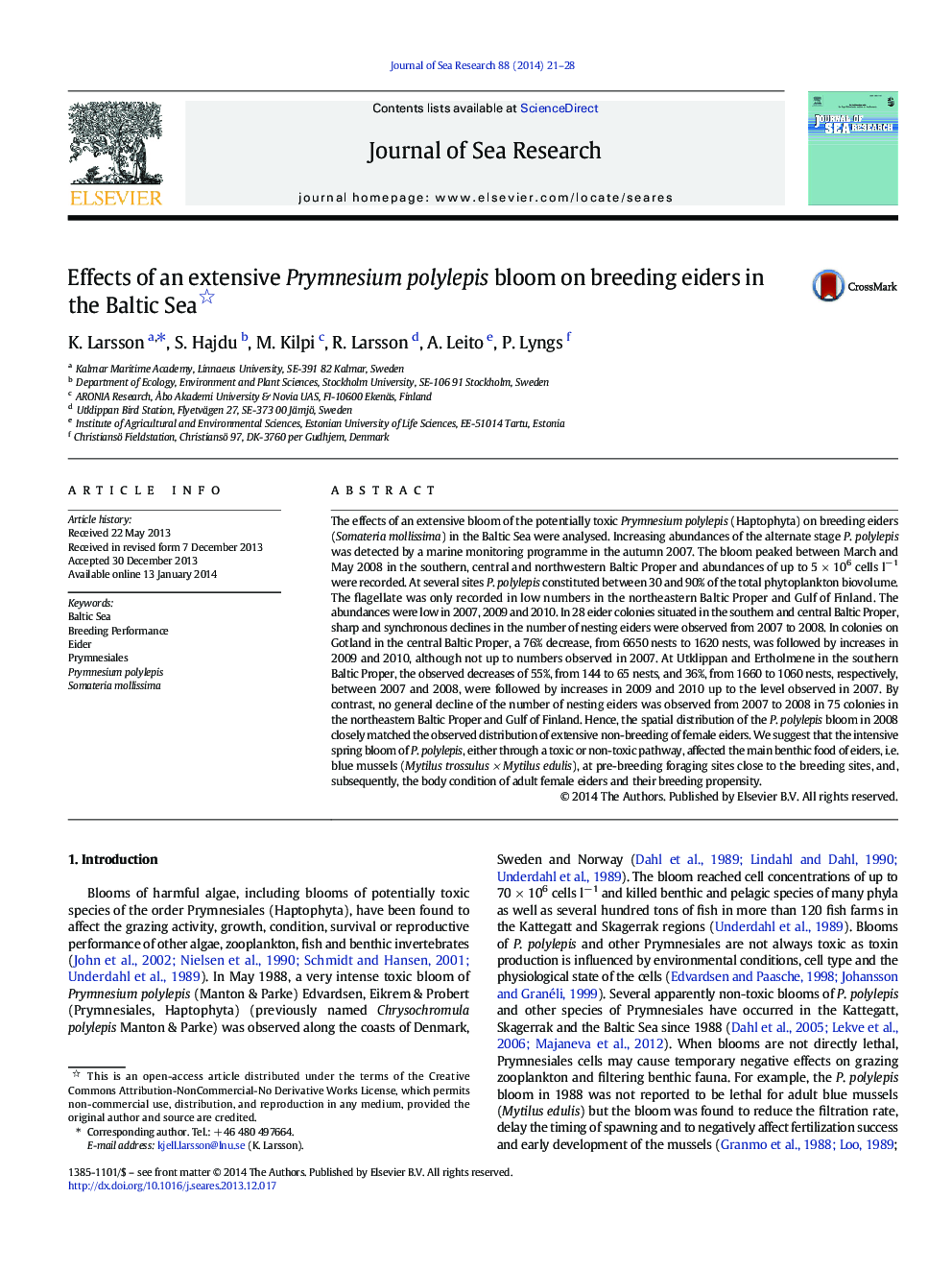| کد مقاله | کد نشریه | سال انتشار | مقاله انگلیسی | نسخه تمام متن |
|---|---|---|---|---|
| 6387334 | 1627486 | 2014 | 8 صفحه PDF | دانلود رایگان |
عنوان انگلیسی مقاله ISI
Effects of an extensive Prymnesium polylepis bloom on breeding eiders in the Baltic Sea
ترجمه فارسی عنوان
اثرات یک گلرنگ پرییمنسیم پالئلیسپزی بزرگ بر روی پرورش گیاهان در دریای بالتیک
دانلود مقاله + سفارش ترجمه
دانلود مقاله ISI انگلیسی
رایگان برای ایرانیان
کلمات کلیدی
موضوعات مرتبط
مهندسی و علوم پایه
علوم زمین و سیارات
اقیانوس شناسی
چکیده انگلیسی
The effects of an extensive bloom of the potentially toxic Prymnesium polylepis (Haptophyta) on breeding eiders (Somateria mollissima) in the Baltic Sea were analysed. Increasing abundances of the alternate stage P. polylepis was detected by a marine monitoring programme in the autumn 2007. The bloom peaked between March and May 2008 in the southern, central and northwestern Baltic Proper and abundances of up to 5 Ã 106 cells lâ 1 were recorded. At several sites P. polylepis constituted between 30 and 90% of the total phytoplankton biovolume. The flagellate was only recorded in low numbers in the northeastern Baltic Proper and Gulf of Finland. The abundances were low in 2007, 2009 and 2010. In 28 eider colonies situated in the southern and central Baltic Proper, sharp and synchronous declines in the number of nesting eiders were observed from 2007 to 2008. In colonies on Gotland in the central Baltic Proper, a 76% decrease, from 6650 nests to 1620 nests, was followed by increases in 2009 and 2010, although not up to numbers observed in 2007. At Utklippan and Ertholmene in the southern Baltic Proper, the observed decreases of 55%, from 144 to 65 nests, and 36%, from 1660 to 1060 nests, respectively, between 2007 and 2008, were followed by increases in 2009 and 2010 up to the level observed in 2007. By contrast, no general decline of the number of nesting eiders was observed from 2007 to 2008 in 75 colonies in the northeastern Baltic Proper and Gulf of Finland. Hence, the spatial distribution of the P. polylepis bloom in 2008 closely matched the observed distribution of extensive non-breeding of female eiders. We suggest that the intensive spring bloom of P. polylepis, either through a toxic or non-toxic pathway, affected the main benthic food of eiders, i.e. blue mussels (Mytilus trossulus à Mytilus edulis), at pre-breeding foraging sites close to the breeding sites, and, subsequently, the body condition of adult female eiders and their breeding propensity.
ناشر
Database: Elsevier - ScienceDirect (ساینس دایرکت)
Journal: Journal of Sea Research - Volume 88, April 2014, Pages 21-28
Journal: Journal of Sea Research - Volume 88, April 2014, Pages 21-28
نویسندگان
K. Larsson, S. Hajdu, M. Kilpi, R. Larsson, A. Leito, P. Lyngs,
